It was morning – not one of those crisp misty punctual ones that were still happening a few weeks ago here in Avalon but one of the ones that have barged gracelessly in and replaced them and don’t fully happen, if they do happen all, until about eleven am, by which point, let’s face it, at this time of the year it’s essentially evening, and you’re already wondering about what to have for tea and what book to read and whether tonight will be the night you finally get around to connecting your Netflix account – but on the upside Clarence the pheasant was visiting so I filled the bird feeder right up to the brim in an attempt to add some sparkle to the day. Clarence technically could fly up and reach the bird feeder, if he really focussed his thoughts on the task, but it is doubtful he would try, being a bird who is generally more concerned with image than the life of the mind. If the feeder is full, though, I know it means more robins, dunnocks and blue tits dropping seeds on the grass for Clarence to vacuum up, along with the flakes of last night’s poppadum I’d left out for him. I prefer my poppadums stale, aged to a fine vintage of between 12 and 15 hours, which will give you an idea as to the high esteem in which I hold Clarence.
I’d initially heard about Clarence from Rachel, my new landlady, before I moved to Somerset, in late August. She talked about what a mystery his singleness was, especially in view of his appearance, and when I saw him I puzzled over the matter too, but then I realised this made me another one of those people who assume everyone who is single is desperately looking for love, without taking into account that some are very content in a single state and enjoy their own company and don’t view it as a position of intrinsic sadness or diminishment. Clarence wasn’t around much at first but has become increasingly bold since then, or as bold as you could ever expect a creature who has been bred to exist in a constant state of terror to be. Sometimes he will see me through the picture window in my living room and, provided I avoid sudden movements, will carry on pecking about, maybe let out a triumphant “ch-kauwck!”, fluff his feathers out a bit. I tell myself I’m providing refuge from the people who want to kill him but all I’m really doing is making sure he has a constant supply of food and being careful not to be overly boisterous in his vicinity. An hour later, as I was leaving the house, I noticed he was in the back field, and, fearing for his safety, shouted “Clllaaarrrrence!”, but then remembered he has no idea he is named Clarence, and is a pheasant. He did a little run, in the way he does, which as with all pheasants looks like he is saying “Shit shit shit!” as he does it, and his “ch-kauwck!” joined the undersong of the day. Undersong, a word I like and tend to overuse, describes the ambient murmur of a landscape on a given day, sounds you have to think to fully tune into. As well as Clarence, the undersong of the outside of my house at this particular point included the clop of three horses further along the lane and a succession of gun shots two or three fields away. The undersmell, meanwhile, was that of fresh cowpat. To tell the truth, it was more of an oversmell.
Beside the A303, the road into the west, the ancient road, a big road that is something of a big road anomaly in that it often acts like a secretary to landscape rather than like landscape’s pissy inconsiderate boss, men in green semi-camouflage gear were shooting Clarence’s brethren in the fields. There might have been women too, I don’t know; I only saw men. Presumably the camouflage gear was in case they encounter an unusually pecky and violent pheasant who creeps up on them from behind and tries to fuck them up. These men would no doubt argue to you that what they were doing is traditional and historical as opposed to, say, that it was a grand act of cowardice taken out on a defenceless animal bred purely to indulge their bloodthirsty twattery. It seems unlikely that these men, so in thrall to tradition and history, would practice the even more historical art of, say, dressing only in a loin cloth, starving themselves for a while, and attempting to bring down an animal five times their size while unarmed. Not far past the turning for Warminster, I noticed a large dead hare on the verge: soggy and half-black and sinewy. A few miles on from here, as you head east, the land turns sinewy too. I am interested in this terrain but it’s not one that I think I could ever enter into a love affair with, or could imagine offering me a hug in a time of crisis. It would never give me the polite hug that I’d get if I turned right towards Cranborne Chase, or the gregarious, hairy hug I’d get if I turned around in a totally opposite direction and headed ninety miles miles south west, back to the part of Devon where I lived until late summer. Strangely, for a county best known for Stonehenge, a landmark so closely associated with Summer Solstice, Wiltshire feels like winter to me. Maybe that is partly because winter is when I have most frequently walked in it. But each time I come, I look in vain for the places where summer can happen. I love soaking up the neolthic ambience on the Wiltshire Downs but I can’t shake a stronger feeling that I’m walking around a film set: a balder, one-colour, unreal parallel Britain, underpopulated, overthatched. The book I had just finished reading – also set in Wiltshire – is not about winter, but it is overwhelmingly wintry. A book – well-known at the time of its publication but now a little bit overlooked – by a dead writer, in which nearly everyone either dies or seems to be in some kind of bucolic yet stark antechamber for death. Perhaps an antegreenhouse for death. There are a lot of greenhouses in the book.
I plan some of my walks in advance but an increasing number get scheduled on the day they happen, in a burst of scattershot inspiration, like the walk is a verse I’d been waiting to write but couldn’t, until inspiration struck. I’m just glad most of my work is of the singer-songwriter variety since I’d probably be a nightmare to collaborate with on a group project. I was meant to be doing something completely different than driving to Wiltshire on this particular day, but the vivid pictures in the book, which is called The Enigma Of Arrival and was written by VS Naipaul during the mid-80s, propelled me here on a journey. Were it to be be rejacketed today and feted by a couple of high profile psychogeographers, The Enigma Of Arrival would no doubt be a classic of angular, unexpected nature writing. Naipaul describes Wiltshire almost as you expect an alien might and to an extent that is what he is, as someone who spent the first two decades of his life in Trinidad, even though he’d already lived in the UK for several years, before he relocated to Wilton-cum-Lake, near Stonehenge. He disguises the location to an extent, but it’s not hard to work it out, just as it’s not hard to work out that his reclusive neighbour and landlord was Stephen Tennant, former cherubic Bright Young Person and inspiration for Sebastian Flyte in Evelyn Waugh’s Brideshead Revisited. Even though it’s at the commercial end of Wiltshire, you can see why it was a good place to escape, both for Tennant, who Naipaul never spoke to and only saw twice in the whole of his decade of living there, and for Naipaul himself, who was in a quiet period of “withdrawal” during his time there. It seems impossible that the tourist bustle of Stonehenge – which I got a clear view of from the ridge above the village – is only a couple of miles away: a little green birthday cake in the distance topped with grey candles, another part of the film set.
Being here felt like walking onto a film set in a different way, too. To discover something like this – to finish a book you’d been mesmerised by, albeit in a slow-motion almost banal way, from start to finish, then drive an hour from your house and be deep inside its setting, alone and free to explore – was possible, all for the price of quarter of a tank of petrol, made me giddy. The giddiness was an odd sensation, on a walking route that seemed full of death. I’m not sure where the death feeling came from most: the barren vegetation, or the realisation that every major character in the book – the gardeners Naipaul befriended, Tennant, Tennant’s housekeepers, the local farmworkers and electricians, the neighbour whose husband murdered her, Naipaul himself – is now dead. But this aura of death, of the emptiness that death leaves, also made the universe that Naipaul described more present. I saw just one other walker on my seven mile route: a barbour-jacketed, labrador-walking man of about 70, who looked more like a a barbour-jacketed, labrador-walking man of 70 might have done in 1985. When I drove from out of the village, two small children in identical pink bathrobes, very 1980s bathrobes, rose from behind a hedge to wave to my car, like the less easily distracted children in 1980s villages used to wave at cars. Did they read my lips as I shouted “Fucking hell!” and almost careened across a water meadow into a cob wall in fright? The walking route criss-crossed the River Avon several times, a shallow-banked but full river whose tributaries were often clogged with dead trees, the kind of river you feel might whisper about you behind your back, and I thought of what Naipaul had said about Tennant’s love for ivy, and how he refused to allow it to be cut off the trees behind Wilsford Manor, causing the little inlets nearby to get congested. Unlike Tennant’s biographer, Philip Hoare, who was permitted to wander around the manor as a stranger, not long before Tennant’s death, and heard Tennant talking and laughing to himself in his room, I could not get a proper glimpse of the grounds. Close to the border, I was chased by a bitter but ineffectual poodle, who was soon gathered up by a youth in wellies with an aristrocratic, cherubic, not unTennantlike face. I walked past the pub which Naipaul’s gardening neighbour Jack had soldiered to for a last drink, the night before his death. It was hard to imagine anybody in there. Maybe a couple of old gardeners.
On the even quieter paths further from the villages, in the final part of my walk, a soft sunset briefly threatened to warm the earth, but didn’t. The skies are big characters where I live too but the ones here are more commanding, less keen to offer you comfort. The spindly clouds seemed to reflect the bare branches of the trees, not unlike the Avon did. Naipaul learned to identify tree types while living here and described it as “learning a language, after living amongst its sounds.” The undersmell was sweet and horsey, which was apt, as all the horses I met seemed inordinately sweet. One wore not only a nice jacket and scarf, but flares too. Pheasants were everywhere, particularly on the final leg of the walk. The only thing in the fields I could see more of than pheasants were flints: big ones, like old chipped bones once belonging to knees, feet and hips. The damp weather had brought the softer chalk to the surface too, mushed it up attractively. I could imagine popping up to the hillside with a spade and pickaxe and sketching a quick figure. Nothing too elaborate, but not a horse, or a dragon that people called a horse, or a naked man with a big penis, or a naked man without a big penis. There were already enough of them done in chalk. The Long Pheasant Of Avalon, perhaps. The legend started here. Or did it? Had there, in fact, been another pheasant, chalked into the hillside in Saxon, or even Pagan, times, and was it even really a pheasant, and not a scarier, indigenous bird from prehistory? Why was the pheasant here, and not in Avalon itself? Historians would write many speculative books on the enigma. I’d been to see a White Horse just a week before, Britain’s second most famous equine hill figure, the one above the village of Bratton, near Westbury, which is much more conventional than the prehistoric one at Uffington which looks like a dragon. But the Bratton horse might have once been wilder and more of a renegade, if you believe the theories of either Richard Gough (1772) or TC Lethbridge (1957), about the original shadow horse that predates it. Gough’s drawing shows a smaller, jollier looking horse, potentially of a clumsy nature, whose slightly exposed penis and solitary eye fail to add any threat to its character, while Lethbridge’s is downright terrifying: a war-ready beast, with tusks instead of a face, also Cyclopsian, but in a much more ominous way. The slight disappointment upon getting up close to the horse it is that it’s largely made of concrete, not chalk, making it slightly resemble a modestly-sized but extreme skatepark. This is in contrast to the Cerne Abbas Giant which, when I visited it just over two years ago, was looking more than a little faint. Shortly afterwards I met a shaman on Dartmoor whose friend had slept on the giant’s impressive but faded wang, alone, and enjoyed what she described as “the most erotic night of her life”. The giant’s nether regions are well-known for imbuing those who spend time on them with magic fertility. I have heard no such legends associated with the nether regions of The Westbury Horse, but there is a good story about them in Pamela Street’s Portrait Of Wiltshire (1971), where a young officer driving past the horse in the 1940s is alarmed to find only its backside showing, until his commanding officer explains that it’s in the process of being blacked out so the Luftwaffe don’t spot it and the blacker-outs have started from the front end. The vantage point from the horse is more commanding than from above the giant and, when up there, with the weather the way it was, I had the luxury of seeing for entire yards.
These have been drab dishwater days as I have explored the fringes of the A303 and beyond, exploring this still not fully familiar part of the west: mornings that never really start, afternoons where you check the time and think it’s getting dark then realise that’s just the colour of the day. I’m not a Winter Person and – much as I am fine with Christmas as an approximately forty eight hour period concomitant with a generally agreeable set of warm family feelings and of nature turning over – I struggle, on the whole, in December. In recent weeks I have felt I am missing the furthest, most rugged part of Devon, but I check myself, as I know my judgement, by tradition, can become impaired on such matters around now. I often get a strong sensation of missing stuff at this time of year – people, places – but I know a large amount of it is often an illusion and what I’m really missing is colourful petals and birdsongs and days that aren’t like living inside a cup of tea you left to brew five hours ago and never put any milk in. December is like no other month when it comes to realising how many people and cars and dead animals and bad songs there are in the world and, if you find it – combined with the lack of sunlight and Vitamin D – all a bit much, some of the lesser-known footpaths in Somerset, Dorset and Wiltshire aren’t bad places to retreat to. A six mile circle of Illminster a fortnight ago took me through a minor industrial landscape, but I saw no other walkers. Gates on the north side of town were stiff, suggesting I was maybe one of, say, nine people to have used them since June. The trig point above town was half-hidden and shy, as if it knew there were more famous and cocksure hills nearby whose summits it had missed out on being on. A riverside path took me past ribbed iron posts and an open but deserted warehouse full of machinery with purposes I was oblivious to but wanted to learn, then past rusty barrels full of miscellaneous everything, ready to burn. I poked my head in the warehouse, unable to resist a lungful of oil smell. This seems to have become a Christmas tradition for me. Others go carol singing; I walk along the banks of small, slightly polluted rivers, sniffing fumes and admiring arcane rusty ironwork. I remembered I had almost zero food in the fridge and that I needed to get to a supermarket then made a hypothesis regarding the chances of being asked if I was all ready for The Big Day and remembered I did still have some crisps and a banana and one can of tonic water at home and drove directly there instead.
On another even more gloopy day, redolent of dishwater again, but this time dishwater underneath a bulb that had just gone out in an awful kitchen, I walked to another white horse, above the village of Alton Barnes. I thought of the cover of Dave and Toni Arthur’s 1967 album Morning Stands On Tiptoe, where they stand beneath yet another Wiltshire white horse, at Cherwell, and Toni is looking fantastic with big wild fringey hair and a black witchy cape, and wondered whether to wear my new black witchy cape in tribute. I have never purchased a cape but people keep finding capes, telling me that the capes made them think of me, and giving me the capes. It’s turned out to be an unexpected recent advantage of being me. I recently learned that the actor Nicolas Cage lives just a few fields away from my house – not all the time, I assume, but some of it – and has been known to walk the local footpaths in a cape. Out of this has sprung the fantasy of me walking in my cape, and running into Nicolas Cage in his cape, and it being the start of a beautiful friendship, centred largely around dramatic swishing movements. I tried my cape on before I drove to the Vale Of Pewsey for my walk to the Alton Barnes horse and noticed, as I did, Clarence strutting about behind me, in the garden, also dressed in his finest clothes. For one tiny rare moment, man and pheasant almost mirrored one another, and then it was over. The cape looked ok but I could never look as good as Clarence. I remembered the pheasants I’d seen on my walk at Wilsford and how each of them had seemed a little undersized or scruffy. I’d never been so critical of the appearance of pheasants in the past but Clarence had raised my standards. I was noticing flaws that had previously never been apparent. I decided not to wear my cape to walk to the Alton Barnes horse as it was wet out there and I wanted to at least wait a while before I muddied it up. The landscape was not industrial, like at Illminster, but there was plenty of metal rusting in the fields. I used to think this farm machinery – spiky pronged beasts, serrated wheeled robots, giant rollers suggestive of a wild linoprinting tournament – was just resting for a while before being taken off for melting down and recycling, but now I’ve realised it’s not. It just sits there, getting more and more subsumed into the landscape. You could age each bit on the hill above Stanton Saint Bernard by the amount it had rusted and how far it had sunk into the earth and, while I would have been hard pressed to put an exact date on each, it was clear that there were many generations here: grandparent grass rollers, rollers barely in their 20s who’d lived too fast, great uncle chopping automatons who no doubt had stories to tell. “Eat More Chips” announced the sign on a lone disused tuck van, quarter of a mile from any even minor road. “Maybe I will do just that,” I thought, having probably only had 38 chips in the previous fortnight. I heard a rising, dipping, whirring sound coming from behind some large isolated cowsheds and went over to investigate, thinking it must be coming from some more esoteric machinery, but then realised that the sound was being made by starlings: many, many thousands of them, then a thousand or so more, which I’d initially mistaken for catkins, perched in the trees behind the sheds. They swept up in phantom shapes, like shadow puppets against the bare hill, and I was floored by their unity, but could not help also thinking of Clarence, a bird with apparently no friends, compared to these, who had more intimate aquaintances than they knew what to do with. Sure, the two collared doves who visited my feeder hung out with him a bit, but didn’t seem inordinately fond of him. One even had a bit of a go at him last week from above. But I needn’t have worried. When I got home, just before dusk, he had company: a lady. She was shy, and the mere act of me turning to look startled her, and with a synchronised “ch-kauwck!” they were off over the hedge, soaring over the patch where nextdoor’s pigs live, with all the elan of two winged versions of Beaker from the Muppets. I haven’t seen him, or her, since. Of course, the feeling is bittersweet. It always is at times like this. The garden hasn’t been quite the same these last couple of days. But you’ve got to let go. There’s no other route. He’s got a life to live, and, when it comes right to it, my overriding feeling is one of happiness for him, and for his future, whether I turn out to to be a part of it or not.
I don’t write for any mainstream media publications and chose to put my writing on this site instead: around 200,000 words of it so far. It’s all free, but if you feel like donating a small monthly amount to help me keep going, you can do so either by paypal or GoCardless. You’ll also find a subscription link on the home page if you’d like to sign up to be notified when a new piece is published.
Read my latest book, Help The Witch.
My new fiction book, Ring The Hill, is now funding for autumn 2019 publication.

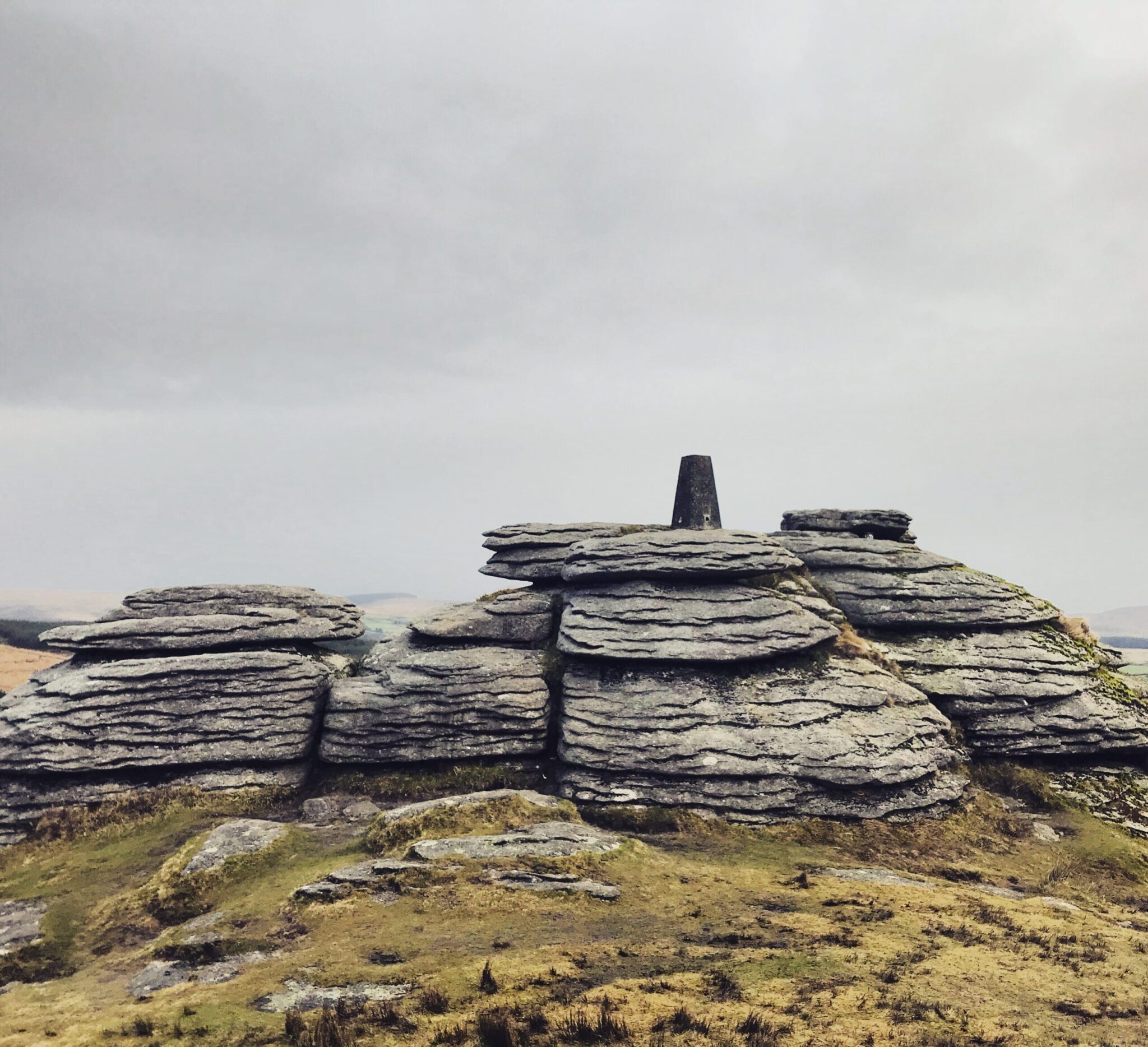
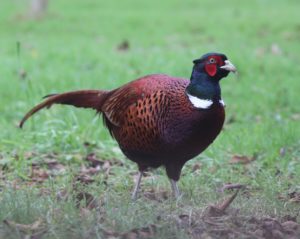
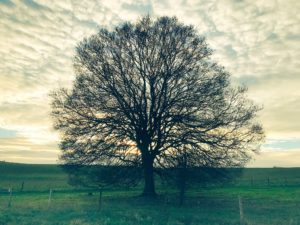
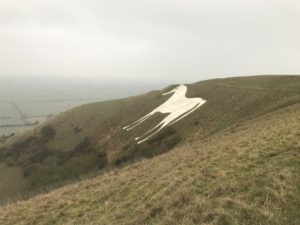
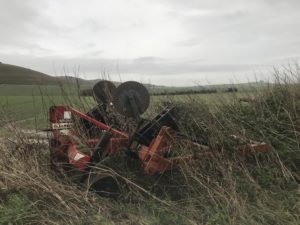
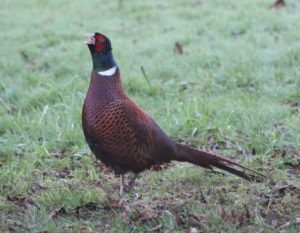
I hope Clarence and his girlfriend return, and become part of your household.
A beautiful, yet a bit sad, piece.
Have a very merry xmas and Happy New Year.
xxx
Loved the bit about the giant lino printing tournament Tom.
And Clarence has a friend!
Thanks for this winter post. I really enjoyed reading it.
Lovely, just lovely.
Love your description of Wiltshire! It always seems such a bleak county to drive through – even in the summer; I think it’s the chalk giving it a permanently grey hue and the huge skies having nothing green and lush to reflect. For me, it always feels like it’s a county that’s just allowing you to pass though and would much prefer to just scream ‘fuck off’ at you and hope you never come back.
Perhaps, if one just zips through east-west or vice versa but take time to explore the water meadows of the Avon or Wylye valleys or sink into the bosky landscape around Fonthill and Tisbury in the south-west of the county. Lovely . . . .
That was a lovely, wintry piece, best read by a warm fire with hot chocolate. Thank you. Merry Christmas.
There’s always much I enjoy in your writing, even when I can’t identify with your winter doldrums and feel an overriding image and feeling of dishwater.
I came here looking for comfort in the winter’s dark. You echoed my feelings… until the pink bathrobes. I needed that laugh. It’s a lovely piece, as always. I’ve never been to Britain but I see it through your words. Thank you for sharing your talent.
beautiful nature, there are no words.
Isn’t this a LONE pheasant, not a long one?? Admittedly he has a long tail but as the paragraph discusses his single status, I think this is a typo?
Evocative writing again, Tom, I look forward to getting your updates.
Thank you. No, not a typo. It’s a reference to The Long Man Of Wilmington, in Sussex.